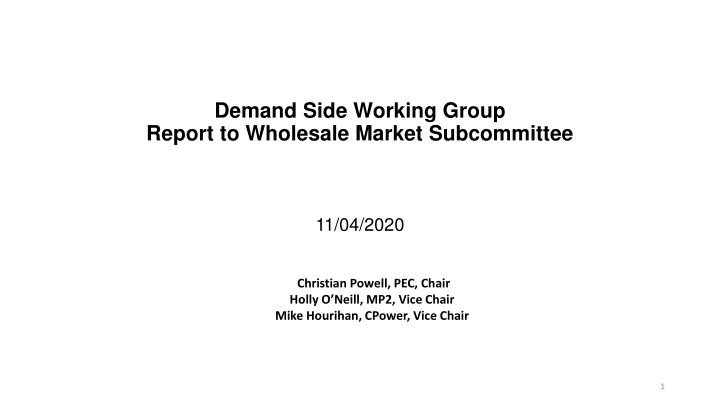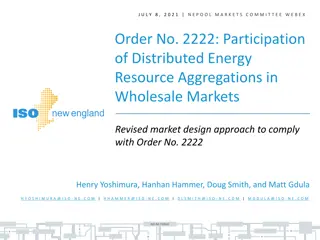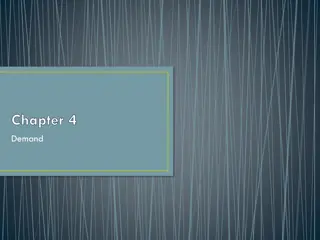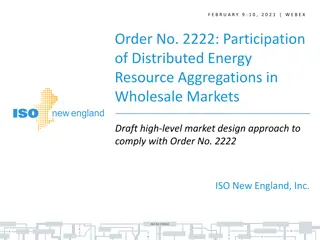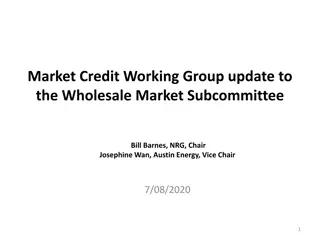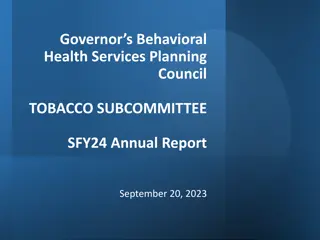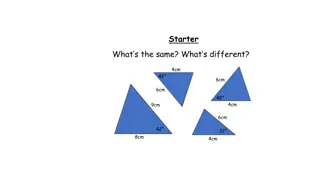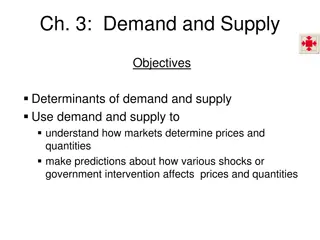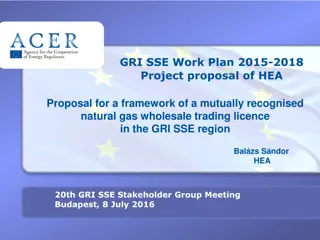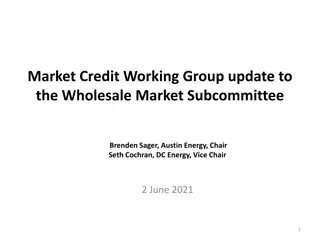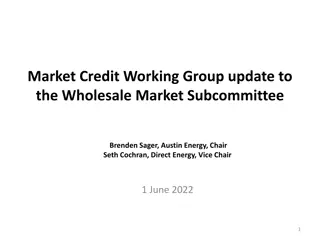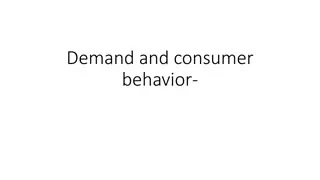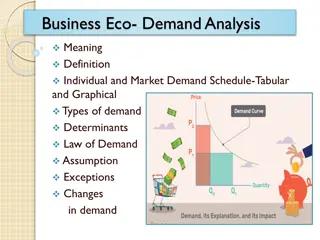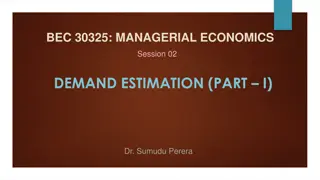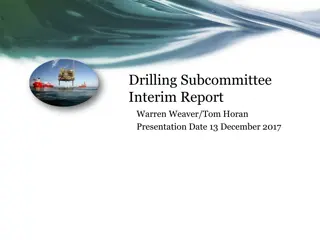Demand Side Working Group Report to Wholesale Market Subcommittee
This report covers key updates discussed in the Demand Side Working Group meeting, including ERCOT updates on Standard Contract Terms, Load Resource Telemetry Issues, and more. Insights on behind-the-meter energy storage and its potential for providing Ancillary Services are also highlighted.
Download Presentation

Please find below an Image/Link to download the presentation.
The content on the website is provided AS IS for your information and personal use only. It may not be sold, licensed, or shared on other websites without obtaining consent from the author.If you encounter any issues during the download, it is possible that the publisher has removed the file from their server.
You are allowed to download the files provided on this website for personal or commercial use, subject to the condition that they are used lawfully. All files are the property of their respective owners.
The content on the website is provided AS IS for your information and personal use only. It may not be sold, licensed, or shared on other websites without obtaining consent from the author.
E N D
Presentation Transcript
Demand Side Working Group Report to Wholesale Market Subcommittee 11/04/2020 Christian Powell, PEC, Chair Holly O Neill, MP2, Vice Chair Mike Hourihan, CPower, Vice Chair 1
October 16th DSWG Webex Meeting Recap ERCOT Updates o ERS Oct. Jan. Update o Load Resource Telemetry Issues o ERS Generator Metering Requirements o Demand Response Survey Update Behind the Meter Energy Storage 2
ERCOT Updates ERS Oct-Jan Standard Contract Term (SCT) Procurement results by Time Period ERS Generator Metering Requirements o ERS Generators are considered unavailable when their output is greater than the sum of its self-serve capacity and its declared injection capacity for the ERS Time Period o Output metering should be 15-minute settlement quality IDR metering o ERCOT will treat ERS Resources as unavailable for any committed intervals for which the non- TDSP meter data is unavailable o Some specific exceptions (Testing, ERCOT Instruction, TDSP forced outage, minimal parasitic consumption) o Before start of SCT, each ERS Generator QSE required to complete spreadsheet provided by ERCOT attesting to use of the ERS Generator
ERCOT Updates Load Resource Telemetry Issues o CLR (ESR) Load telemetries not being telemetered while charging, and should be telemetered even in OUTL. o Includes external source charging. o CLR does not have to telemeter State of Charge (SOC), if the Gen telemeters SOC. Should be provided as MWh, not as a % of charge. Demand Response Survey o REP ESIID and event file submittals were due on Oct. 15 59 REPs with participation 26 REPs had already been processed as of Oct. 16 o Oct. 31 was deadline for all NOIE and REP survey data submittals. o ERCOT Report Due Dec. 15
Behind the Meter Energy Storage Question posed by Crescent Power: Can battery energy storage col- located with load behind a single POI provide Ancillary Services (primarily RRS) from the full range of the battery and also be used to reduce Load during pricing events and during 4CP intervals by discharging the battery? ERCOT suggests an ESR subtype that registers as an ESR but would operate like a CLR o Would require both protocol and system changes For AS Qualification o In order to provide AS from the operation of the battery, the battery system must register as an ESR and be separately modeled from firm load. o If not registering as ESR, then registering as a CLR would require substantial policy changes to allow for a battery behind a firm load to be a CLR.
Behind the Meter Energy Storage (cont.) The following are necessary for this ESR subtype to meet all of its objectives: o ESR would be settled at its Load Zone Settlement Point (the site is always net load) o Restricted to sites where there is a single POI with a single modeled Load present prior to installation of the battery i.e., transition to ESR o Telemetry required for both the ESR and mandatory telemetry requirement at the POI o Modifications to calculation of PRC using battery State of Charge telemetry o Allow for telemetry offsets to allow SCED to provide full range of basepoints e.g., instead of -10 to +10 MW allow -20 to 0 MW to account for never injecting o Performance criteria similar to CLR o Must address how ESR will provide RRS when ESR is charging or when ESR is fully charged and how ERCOT will measure performance o Specify new requirements/rules for telemetry of the Load and ESR o Specify new requirements/rules for ESR outages o Reactive requirements same as ESR
Behind the Meter Energy Storage (cont.) Larger Policy Questions: o To resolve the settlement issue. Should a CLR be settled using nodal pricing? o Congestion management could require significant effort with proliferation of use of Load Zone shift factors. o Should such configurations require an SGIA and additional integration and planning studies? Summary: o ESR could be a current option for AS, but BES must be separately metered and not able to switch back and forth between ESR and Unregistered Resource. o Other issues and scenarios from other Market Participants were discussed such as additional generation behind the meter, col-located load registration as CLR, and settlement issues. o MP would prefer swift resolution of the request and could post protocol revision request, but larger policy issues remain. o Is there an interest or direction from WMS for more review of these issues via a workshop, BESTF, or additional discussions at DSWG?
